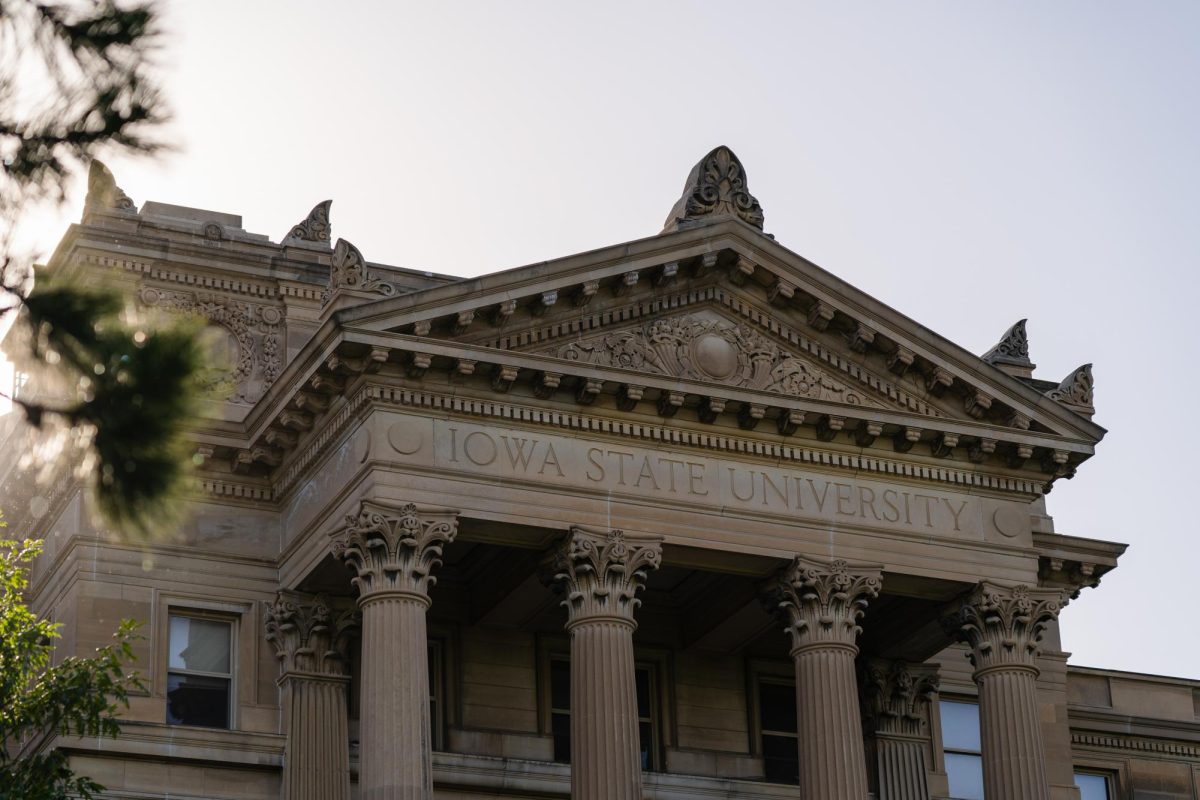Ames refugees and immigrants tell their stories
Audience members listening to Adhaar Bol at the League of Women Voters of Ames and Story County public forum at the Ames Public Library Thursday evening.
December 16, 2022
Before fleeing to Ames, Yevhen Shevchenko remembers the night sky of Donetsk, Ukraine disrupted by flashing lights paired with the continuous sound of explosions.
“Our region became a war field,” Shevchenko told members of the Ames community.
Shevchenko presented footage of the conflicts taking place in his hometown. In the same city he, and his wife Oksana, started a small business and were raising their two children.
Russian presence wasn’t necessarily new to Shevchenko; in 2014 Russia took Crimea and a portion of eastern Ukraine. During that time their city was hit by a bomb. So Shevchenko expected conflicts to be short-lived until February of 2022 when Russia invaded Ukraine and their quality of life began to deteriorate.
Shevchenko’s experience as a refugee was one of four stories shared during the public forum titled Immigrants and Refugees: How to make Ames Welcoming. Chair of the Ames Interfaith Refugee Alliances Diane Birt shared the stories of two asylum seekers and presented a recorded story of a refugee. The forum was hosted by the League of Women Voters of Ames and Story County in conjunction with the Ames Public Library.
There are over 100 million individuals forcibly displaced, according to a 2022 report from The World Bank. Of those 27.1 million are refugees, 53.2 million are internally displaced people and 4.6 million are asylum seekers, according to the presentation.
Adhaar Bol said she remembers leaving South Sudan with 200 other refugees and walking for weeks. People with children faced a dilemma: leave them behind or run the risk of crying or too much noise triggering shots from the army personnel. Food was so scarce they ate dirt and sand, Bol said.
“I was hungry and my stomach really hurt, but then the hurt was gone,” Bol said in a recorded video during the forum. “So when I stopped complaining, my mother knew that I was dying.”
When Lícida, whose last name was excluded from the forum presentation, lived in Honduras she worked on a local farm and as a treasurer for her Diocese. Lícida had to leave her life behind when a leader of a gang began threatening her’s and her son’s life. Lícida was also an advocate and she spoke out against the taking of communal forests.
This speech resulted in the gang attacking her.
After the attack, Lícida helped secure the conviction of one of the gang leaders, but it wasn’t long after the leader was released Lícinda her son and her extended family received death threats.
Lícida and her son left their home and spent three housed in an asylum program before coming to Ames. Birt also shared the stories of a woman who was a Dreamer under the Deferred Action for Childhood Arrivals program (DACA), who now lives in Marshalltown, Iowa.
Over 75% of immigrants are in the U.S. legally, according to Pew Research. Birt said hundreds of people who are denied at the southern try again out of necessity, and it is a small percentage of people who are smuggling drugs.
“I think it is important for people to realize that the majority of the people at the southern border want to come in legally,” Birt said. “They are seeking asylum. The problem is we don’t have enough people to process them and they are being illegally turned back.
Refugees and immigrants are often bunched into the same group, Brit said. A refugee is a person who must leave their country of nationality due to persecution on account of race, religion, nationality or identifying with a certain social group or political opinion, according to the Department of Homeland Security. An aslysee is an individual who is “present in the U.S. or seeking admission at a port of entry.”
So when anti-immigrant rhetoric spreads, refugees also experience the backlash, Birt said. From 2016 to 2020 the annual refugee ceiling dropped from 85,000 to 18,000. Shevchenko said he is in multiple group chats with over 3,000 people trying to leave Ukraine.
“I want to make the process easier for people,” Shevchenko told the Daily. “I have a lot of friends who want to get out from our region.”
The ceiling increased to 125,000 by 2022. At the same time, the number of refugees admitted increased to 25,400. This increase is still fewer than in comparison to 85,000 admitted in 2016 and over 207,000 in 1980.
“What I speculate is, we don’t have enough personnel,” Birt said in regard to the drop in admission. “During the last administration the budget was cut, so you lost all the people who were doing the processing.”
Pressure from the southern border and U.S. withdrawal from Afghanistan could also be contributing factors, Birt said.
“People forget about how important immigration is to our country,” Birt told the Daily. “Unless you are Native American since our government was formed you probably have immigrants in your family history and people forget that. The word immigrant has been politicized.”
Both Ames Interfaith Refugee Alliance and Ames Sanctuary Interfaith Partners work with volunteers to help support refugees and immigrants in Ames.
If students want to get involved with on-campus volunteer work relating to refugees and immigrant issues, they can reach out to Brittney Cuevas at [email protected].








David Hansen | Dec 25, 2022 at 12:23 am
The vast portion of persons seeking refuge in the US do NOT enter as REFUGEES. They enter as IMMIGRANTS under very different conditions. Refugees enter through the State Department arrangement with the UN refugee program–with cap and restrictions determined solely by the US President. Immigrants enter through Homeland Security with enforcement by ICE–without government support. Nearly all are from the West Hemisphere, enter our Southern border, and unlike refugees are imprisoned awaiting court determinations.